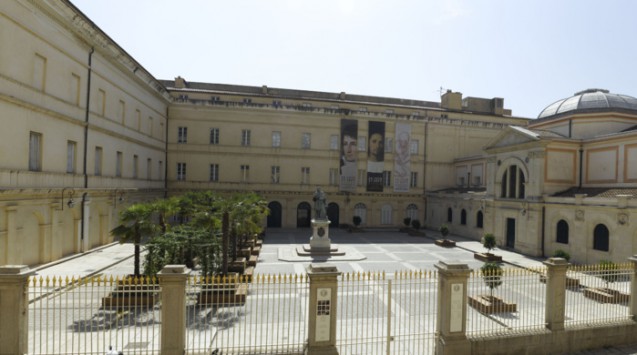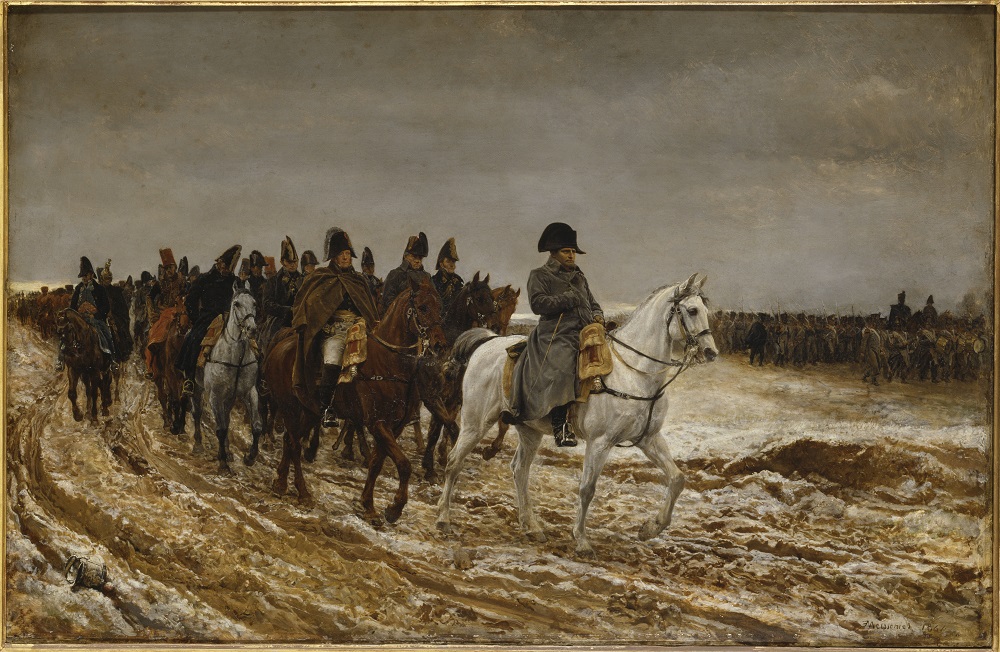2021 Année Napoléon > Palais Fesch – Musée des Beaux-Arts d’Ajaccio (Ajaccio Museum of Fine Arts)
 In 2021, the Palais Fesch-musée des Beaux-Arts in Ajaccio, Corsica, is organising an exhibition on the theme of “Napoleon, legends”, on the occasion of the bicentenary of Napoleon’s death, in partnership with the Musée national des châteaux de Malmaison et de Bois-Préaux.
In 2021, the Palais Fesch-musée des Beaux-Arts in Ajaccio, Corsica, is organising an exhibition on the theme of “Napoleon, legends”, on the occasion of the bicentenary of Napoleon’s death, in partnership with the Musée national des châteaux de Malmaison et de Bois-Préaux.
Updated 18 May 2021.
For further information, please visit the museum’s website (in French)
Exposition > “Napoleon, Legends”
2 July – 4 October 2021

Presentation of the exhibition
There is more than one legend of Napoleon. The first, and perhaps the strongest of them, was forged during his lifetime by Bonaparte, the First Consul and the Emperor. The second came later, after the fall of the Empire and Napoleon’s death on St. Helena; from the outset, it was a multifacetted phenomenon that asserted itself and grew thanks to the political context of the Restoration, and at the same time owed part of its growth to the blossoming of the European romantic movement. Conveyed through images, stories, theatre, songs and seditious objects, the Napoleonic legend was initially popular; but by crossing the path of Romanticism, it rose to the highest heights of literature and art from where it influenced the political destiny of France. It forced the return of the hero’s mortal remains to Paris and facilitated the reconquest of power by Bonaparte’s heir. The Napoleonic legend represented the definitive return of the Emperor, which his supporters had so often called for – the return of the Emperor in spirit and thought, so ardently desired by his followers. In 2021, as we commemorate Napoleon’s tragic death on St Helena two hundred years later, the exhibition at the Palais Fesch looks beyond the event to tell the public and readers about the second life of the first French Emperor.
See the press release (update 18 May) in French
► The exhibition will be accompanied by the publication of an extensively illustrated scholarly catalogue devoted to the figure of Napoleon at the crossroads of art, literature, music and cinema, from the 19th to the 20th century.
Visiting arrangements pending.
Furthermore, the town of Napoleon’s birth, Ajaccio, is organsing many events for the bicententenary of Napoleon’s death. (pdf in French)
GENERAL INFORMATION
List of partners of “2021 Année Napoléon”.
Follow the special Instagram account for “2021 Année Napoléon” events.
Follow the Fondation Napoléon’s Facebook page in English.
Follow the Fondation Napoléon on Twitter.
Consult the page of the partner publishers and their published or republished works
on the occasion of the bicentenary of Napoleon’s death.
Subscribe to our free weekly newsletter (French or English).
PrEsentation OF THE Palais Fesch-Musée des Beaux-Arts OF Ajaccio
The Palais Fesch was built by order of Cardinal Joseph Fesch, maternal uncle of Napoleon I. The cardinal began to develop a passion for art during his first stay in Italy. Throughout his life, he increased his acquisitions at exhibitions, public sales, from artists and art dealers. The prelate wished to create a large establishment in Ajaccio, in the Saint-Roch district by the sea, an “Institute of Arts and Sciences”. At the time of his death, the inventory of the gigantic collection that had been kept until then in the cardinal’s Roman palaces consisted of 17,767 works of art, including about 16,000 paintings, i.e. more than could be found in any painting museum of the time Joseph Fesch was certainly one of the greatest collectors of his time. This great art lover bequeathed to his native town nearly a thousand paintings, furniture and liturgical ornaments.
The palace, begun in 1828, was not completed until the Second Empire. Commissioned by the municipality to pay tribute to Ajaccio’s benefactor, the statue of Cardinal Fesch, located in the centre of the courtyard, was executed by the Parisian sculptor Vital-Gabriel Dubray. The Fesch Museum dates back to the end of the 1850s. Over the years, donations and bequests, including that of Félix Baciocchi in 1866, have been added to that of the cardinal. The Ajaccio museum holds one of the most important collections of works by Italian painters in France. Three major collections stand out from the panorama of Italian painting from the Trecento to the Settecento: the Italian Primitives, Roman Baroque painting and Neapolitan Baroque painting.
